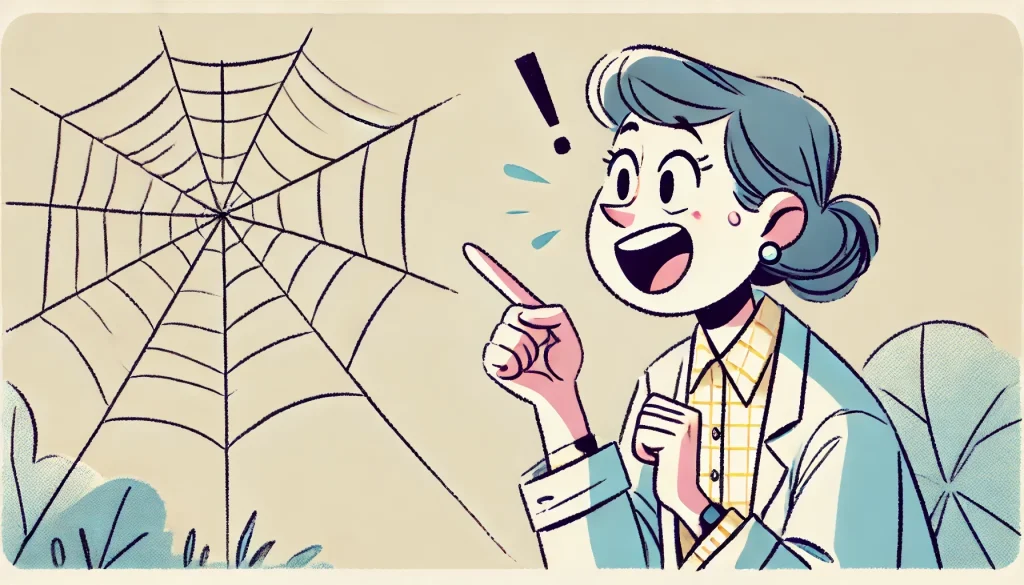Arachnophobia, the fear of spiders, is a common phobia affecting millions of people worldwide. In this comprehensive guide we will explore how arachnophobia can develop, how these fear responses can impact upon our daily lives, and most importantly, which strategies are best used to treat arachnophobia.
Whether you’re seeking to understand your own fear of spiders or help a family member or friend, this article provides valuable insights and practical solutions for conquering the fear of spiders.
Understanding Arachnophobia
What is Arachnophobia?
Arachnophobia is an intense and irrational fear of spiders. Despite its prevalence, the term has only been in common use for about a century. A fear of spiders can manifest in a variety of ways, from a physical reaction of mild discomfort to severe panic attack, and can have a significant impact upon daily life.
Is Arachnophobia a Mental Illness?
While arachnophobia might be considered a debilitating medical condition, it is not typically classified as a mental illness. Having a spider phobia does not fall into the category of disturbed thinking or dis-regulation of emotion or of behaviour that typically defines mental illness. Certainly, as we will find out, a fear of spiders can be successfully treated through appropriate interventions.
That said, in severe cases, help from a mental health practitioner may be necessary to manage the significant distress, anxiety disorder and any other different characteristics that can impact the life of the person suffering.
The Origins of Spider Fear

Are We Born with Irrational Fear?
Mixed research has left a few questions as to whether we have an evolutionary response to feel fear and whether this is triggered by the movement of live spiders, other arachnids or, indeed, virtual representations, which we will explore shortly.
Yet, arguments aside, contemporary study seems to suggest we are far more likely to suffer from learning our parent’s specific phobia rather [1] than being born fearful.
Indeed, these studies have shown babies quickly identifying spiders from images but without exhibiting the fear you might expect. Yet, by the age of three, children tend to identify the potentially dangerous spiders faster than non-threatening objects like flowers, so what does this mean?
It would seem to suggest that children have very good visual acuity but not a great deal more but, certainly, it has not helped establish that we are born with an inherent fear of spiders.
What Causes Us to Develop Arachnophobia?
So, if we’re not born with it, why do an estimated four million people suffer from a debilitating fear of spiders? It is generally agreed that arachnophobia develops due to the following factors:
- Our Genetics: Some studies seem to suggest that phobias and anxiety disorders do have a family history. Stating that our evolutionary history began in Africa, where a healthy fear of poisonous spiders probably brought distinct evolutionary advantages, this theory seems to make a good deal of sense. Though, as we have covered, this theory doesn’t seem to stand-up to more contemporary analysis.
- Environmental Influence: With our genetics in mind, negative encounters with spiders during our early history could be said to have imprinted a fear throughout our species and, especially during childhood, others’ displays of fear can definitely contribute to our own.
- Learned Behaviour: We grow with our environment but, as children we often mimic the reactions of our parents/guardians or those from another person. If anyone we look up to displays a fear towards spiders we, as children, are more likely to internalise that and develop a similar response.
- Cultural Norms: Media portrayals of spiders as dangerous or spider webs used in films and TV to drive a sense real terror only help to reinforce negative perceptions.
- Traumatic Experience: One single frightening encounter can be enough to trigger lasting phobias, something like a spider falling onto your foot when picking up your laundry, for example, can be enough to develop symptoms.

The Impact of Arachnophobia on Daily Life
Arachnophobia can significantly affect the day-to-day activities of a person, affecting rational thoughts and overall mental and physical well-being, causing:
- Avoidance of outdoor activities like picnics, hiking, or camping
- Difficulty participating in Halloween festivities
- Anxiety when entering spaces where spiders might be present
- Limitations travelling or visiting certain locations
- Stress from surveying and assessing everyday environments
If you don’t suffer any of these, it’s important to understand that arachnophobia can make simple tasks like using public restrooms, going to the cinema, or visiting friends’ homes challenging and anxiety-inducing experiences.
Spider Phobia Symptoms and Diagnosis
Common Symptoms of Arachnophobia
- Intense fear or panic at the sight or, sometimes, just the thought of spiders
- Avoidance behaviours related to potential encounters with spiders
- Sweating, shaking, and rapid heartbeat
- Difficulty breathing or feeling tightness of the chest
- Nausea or dizziness
- Overwhelming desire to flee from spider-related situations
Diagnostic Tools for Arachnophobia
At Creature Courage we use several methods to diagnose and assess the severity of arachnophobia:
- Self-report questionnaire: Our questionnaire helps to gauge a person’s level of fear and how it might impact their daily life
- Behavioural observation: Observing how a person reacts to spider-related stimuli, especially within the controlled environment of our exposure therapy, helps to gain a better understanding of your phobia and how we might best address it
- Clinical interview: In-depth discussions about your fear, its origins, and effects upon you.
- Spider phobia test: Specialised assessments can be used to measure the intensity of your spider-related fear.
These diagnostic tools are often used to help therapists develop and tailor personalised treatment plans.

How to Overcome Intense and Irrational Fear of Spiders
Professional Exposure Therapy
Exposure therapy (also known as immersion therapy) is considered the most effective treatment for arachnophobia and it is the one in which Creature Courage excels. The approach involves the gradual expose of a person to their feared object (spiders) within a controlled and safe environment.
How Exposure Therapy Works
- Gradual Exposure: The therapy begins with less intimidating forms of exposure, such as looking at pictures of spiders or through the use of a toy spider
- Progression: Once the person becomes comfortable with the initial exposure, it can be increased to more direct interactions, such as being in the same room as a live spider
- Desensitisation: Through repeated exposure, the brain’s response becomes slowly rewired, which reduces the fear over time.
- Controlled Environment: As just touched upon, all exposure occurs in a safe and controlled setting under the guidance of a trained therapist
Cognitive-Behavioural Therapy (CBT)
CBT is another effective approach for treating arachnophobia. It focuses on identifying and challenging negative thought patterns related to specific phobias. Key aspects of CBT include:
- Recognising irrational fears and beliefs about spiders
- Learning to replace those thoughts with more rational thoughts
- Developing effective coping strategies for managing anxiety symptoms
- Gradually facing fear-inducing situations in a controlled manner
Virtual Reality Therapy (VR)
VR therapy (or augmented reality therapy [2]) is a relatively new and innovative treatment that provides virtual representations of live spider encounters in a virtual environment. This allows a person to confront their fears in a setting that mimics real life but is completely safe and controllable by the individual. This can be a useful staging-post for those who find initial real-world exposure too overwhelming.
Hypnotherapy
While less commonly used, hypnotherapy is still popular and can be highly beneficial. The aim of hypnotherapy is to access the subconscious mind to alter deep-seated fears and responses. However, it’s of great importance to note that the long-term effectiveness of hypnotherapy for arachnophobia varies far more than other therapies and it is, perhaps, best used as part of the overall package than as a single therapy aimed at long-term results.
Natural Methods for Managing Spider Phobia
In addition to the above therapies, there are several natural methods that can be used alongside:
Mindfulness and Relaxation Techniques
- Deep Breathing Exercises: Controlled breathing can help manage anxiety during spider encounters.
- Progressive Muscle Relaxation: This relaxation method involves tensing and relaxing different muscle groups to reduce overall body tension.
- Meditation: Regular meditation practice can improve emotional regulation and reduce anxiety levels.
Cognitive Strategies
- Positive Self-Talk: Developing and practising positive affirmations can help combat negative thoughts about spiders.
- Visualisation: Imagining successful, calm interactions with spiders can build confidence and reduce fear.
- Education: Learning about the behaviour and ecological importance of spiders can help demystify them and reduce irrational fears.
- Group Therapy: The NHS states that upwards of 10 million people suffer some form of phobia. Discussing trauma, symptoms, or things like relaxation methods with others can greatly help the process of coping with and eradicating fears and phobia.
Lifestyle Changes
- Regular Exercise: Physical activity can help reduce overall anxiety and stress levels.
- Healthy Diet: A balanced diet can contribute to better mental health and resilience.
- Adequate Sleep: Proper rest is crucial for managing anxiety and maintaining emotional balance.
While these natural methods are helpful, it’s important to use them in conjunction with qualified guidance for best results.
Understanding Spiders: Debunking Myths
What Are Spiders Afraid Of?
Understanding spider behaviour can help reduce irrational fears:
- Spiders don’t exhibit fear in the same way humans do; their reactions are based on pure survival.
- Simply, they are more afraid of us than we are of them and they will try to avoid contact with us.
- Spiders have natural predators like birds, reptiles, and other insects, they don’t need us to worry about, as well.
Common Misconceptions About Spiders
- Most spiders are not dangerous to humans; only a vey small percentage have venom harmful enough to hurt people.
- They play a crucial role in our ecosystem and help control insect populations.
- Against considered belief they don’t actively seek to harm or frighten humans; most human encounters are purely accidental.

The Prognosis: Can Arachnophobia Be Cured?
Overcoming arachnophobia is definitely possible, with professional help it is also a great deal quicker than you might imagine:
- The effectiveness of treatment depends on the person’s commitment and how ingrained the phobia may be.
- While a complete “cure” may not always be possible, most people achieve a manageable level of comfort around spiders.
- Overcoming arachnophobia often leads to increased confidence when facing other fears and anxieties.
Success Stories and Testimonials
Reading about others who have successfully overcome their extreme fear of spiders can be inspiring and motivating. Many individuals report:
- Increased ability to enjoy outdoor activities without constant fear
- Improved quality of life and reduced overall anxiety
- A sense of empowerment and accomplishment
- The ability to handle spider encounters calmly and rationally
These success stories underscore the effectiveness of professional treatment and the possibility of significant improvement for those struggling with arachnophobia.
Conclusion
Conquering arachnophobia is a journey that requires patience, dedication, and often professional support. By understanding the origins of this fear, exploring various treatment options, and committing to the process of overcoming it, individuals can achieve significant improvements in their quality of life.
It should be remembered that seeking help is a sign of strength, not weakness. If you’re struggling with a fear of spiders, consider reaching out to a professional who specialises in phobias. With the right approach and support, you will take control of your fear and live less constrained by your phobia.
Additional Resources
For more information on our therapy and treatment services for arachnophobia and all other animal therapies we offer, please, check out the online resources at Creature Courage or, better yet, call us for a free in-depth discussion about your spider phobia.
Remember, the journey to overcome your fears begins with a single step, well, probably a phone call or email but, however you want to start, we are here to help make that easy and more effective.
References
- LoBue, V. & Adolph, K. E. (2019) Fear in Infancy: Lessons from Snakes, Spiders, Heights & Strangers. Journal of Developmental Psychology, Sep 55(9): 1889-1907.
- De Witte, N. A. J., et. al. (2022) Handheld or Head Mounted? An experimental comparison of the potential of augmented reality for animal phobia treatment using smartphone and HoloLens 2, Frontiers in Virtual Reality, Dec, vol. 3.
- Lindner, P., Miloff, A., Hamilton, W., Reuterskiöld, L., Andersson, G., Powers, M. B., & Carlbring, P. (2017). Creating state of the art, next-generation Virtual Reality exposure therapies for anxiety disorders using consumer hardware platforms: design considerations and future directions. Cognitive Behaviour Therapy, 46(5), 404-420.
- Cougle, J. R., Wilver, N. L., Day, T. N., Summers, B. J., Okey, S. A., & Carlton, C. N. (2020). Interpretation bias modification versus progressive muscle relaxation for social anxiety disorder: A web-based controlled trial. Behavior Therapy, 51(1), 99-112.
- Haberkamp, A., & Schmidt, F. (2015). Interpretative bias in spider phobia: Perception and information processing of ambiguous schematic stimuli. Acta Psychologica, 160, 184-193.
- Botella, C., Fernández-Álvarez, J., Guillén, V., García-Palacios, A., & Baños, R. (2017). Recent progress in virtual reality exposure therapy for phobias: a systematic review. Current Psychiatry Reports, 19(7), 42.
- Pyle, B., & Adam, G. S. (2022). Targeting Specific Phobias with Exposure Therapy: A Systematic Review and Meta-Analysis. Clinical Psychology Review, 102130.
- Seinfeld, S., Bergstrom, I., Pomes, A., Arroyo-Palacios, J., Vico, F., Slater, M., & Sanchez-Vives, M. V. (2016). Influence of music on anxiety induced by fear of heights in virtual reality. Frontiers in Psychology, 6, 1969.
- Thorpe, S. J., Barnett, J., Friend, K., & Nottingham, K. (2011). The mediating roles of disgust sensitivity and danger expectancy in relation to hand washing behaviour. Behavioural and Cognitive Psychotherapy, 39(2), 175-190.



